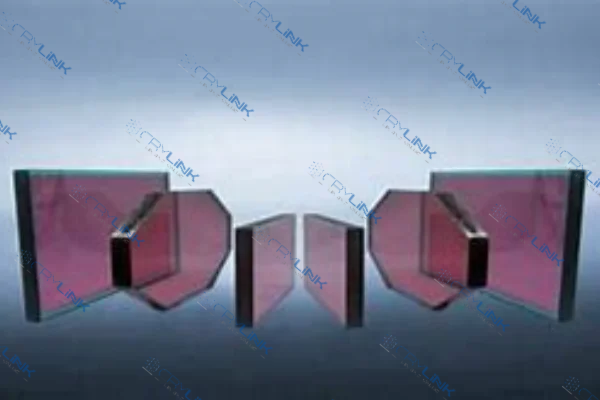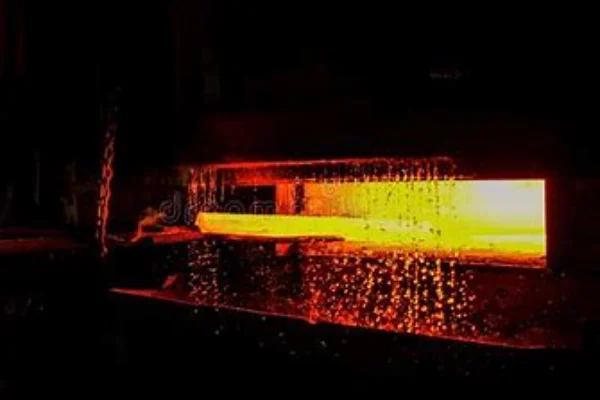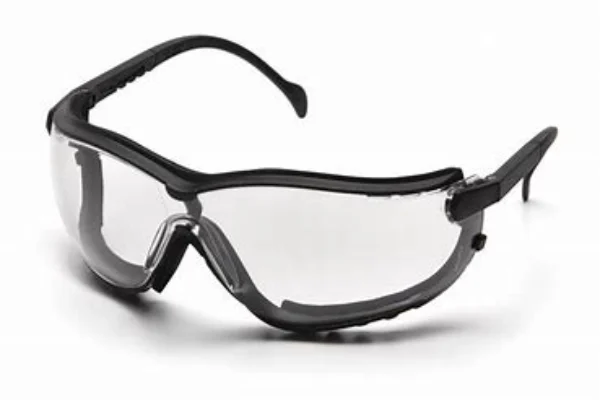Introduction
Welcome to our comprehensive guide on neodymium glass.Neodymium glass is a fascinating material that has garnered significant attention due to its unique properties and applications. In this article, we will delve into ten frequently asked questions about neodymium glass, providing you with in-depth insights and valuable information. From its composition and manufacturing process to its uses and benefits, we’ve got you covered.

What Is Neodymium Glass?
Neodymium glass, often a subject of intrigue in the realm of specialized materials, is a unique variant of glass that stands apart due to its incorporation of neodymium oxide. This specific oxide is derived from neodymium, a member of the rare earth elements family. Rare earth elements, as their name suggests, are not abundantly found on Earth, and this rarity makes materials derived from them quite distinctive.
The magic of neodymium glass lies in its remarkable ability to change color. While, at first glance, this might seem like an optical illusion, it is genuinely a consequence of the neodymium oxide present within the glass matrix. The interaction between light and this oxide gives rise to this fascinating phenomenon. Under different lighting conditions, particularly when transitioning between natural daylight and artificial light, the glass undergoes subtle shifts in hue. These changes oscillate mainly between cool shades of blue and mystic violet, akin to the colors of twilight.
This captivating color-changing feature doesn’t just make neodymium glass a topic of conversation; it makes the material highly desirable for a plethora of applications. Artists, designers, and even scientists value neodymium glass for its aesthetics and unique optical properties, making it a material that, while not commonly known to many, has an undeniable impact in specialized fields.

How Is Neodymium Glass Manufactured?
Manufacturing neodymium glass is a delicate and precise venture that blends the art of traditional glassmaking with the science of material engineering. At the heart of this process is the critical ingredient, neodymium oxide. This rare earth compound is the very essence that bestows the glass with its distinct optical traits.
The process begins by sourcing high-quality raw materials, including silica sand, soda ash, and limestone. Once these basic constituents are prepared and purified, the introduction of neodymium oxide takes place. The proportion of this oxide determines the intensity and specific characteristics of the color-changing feature the glass will display. This mixture, once ready, is subjected to high temperatures in a furnace, facilitating the melting of these components into a cohesive molten mass.
As the molten glass begins to cool slightly, artisans and technicians skillfully shape it into the desired form. This can range from intricate sculptures and decorative ornaments to practical items like dishes or glasses. The shaping process often involves techniques such as blowing, molding, and casting.
After the desired shape has been achieved, the glass undergoes a cooling process known as annealing. This ensures that the glass cools uniformly, eliminating internal stresses that might cause breakage. Once cooled, the glass pieces are polished to perfection, enhancing their clarity and brilliance.
The final product, whether it’s a mesmerizing artistic piece, a functional tableware item, or a pair of spectacles, is a testament to the blend of age-old glassmaking techniques and the wonders of modern material science. The uniqueness of neodymium glass lies not just in its appearance but in the mastery behind its creation.

What Are the Key Properties of Neodymium Glass?
Neodymium glass stands out in the vast spectrum of glass types, primarily due to its set of unique and commendable properties. The first thing most observers notice is its impeccable clarity. This clarity isn’t just a result of its composition, but also a testament to the stringent manufacturing processes it undergoes. Such clearness is essential not just for aesthetic reasons but also for practical applications, especially when it’s used in optical devices.
Another significant attribute is its UV filtering capability. Ultraviolet rays, although invisible to the human eye, can have detrimental effects on materials and even our health. The inherent ability of neodymium glass to filter these harmful rays makes it an excellent choice for protective eyewear and other applications where UV protection is pivotal.
But, perhaps, its most celebrated feature is the color-changing phenomenon. Depending on the ambient light source, the glass can transition between shades, adding a dynamic and almost magical element to its appearance. This isn’t merely a superficial trait; it’s a result of the unique interaction between light and the neodymium oxide content.
Lastly, its remarkable thermal stability deserves mention. Unlike some materials that might warp, crack, or undergo changes under fluctuating temperatures, neodymium glass maintains its integrity. This makes it versatile and adaptable, fit for a range of settings from scorching deserts to chilly mountaintops. All these properties combined make neodymium glass not just a material of beauty but also of remarkable function.

What Are the Applications of Neodymium Glass?
The versatility of neodymium glass has made it an indispensable material in a plethora of fields, reflecting its unique characteristics and the wide range of problems it can address. In the realm of photography, for instance, the quest for the perfect shot is incessant. Neodymium glass, with its unparalleled clarity and color-enhancing capabilities, steps in as the hero. Camera lenses and filters made from this special glass allow photographers to capture images that are sharper, clearer, and more vibrant. It essentially amplifies the world’s beauty through the lens, letting colors pop and reducing the unwanted haze, a challenge that often plagues outdoor photography.
But the applications don’t just stop at the visual arts. In the intricate world of medical technology, precision and effectiveness are paramount. Neodymium glass plays a crucial role in medical lasers, offering controlled intensity and pinpoint accuracy for various procedures, ranging from eye surgeries to dermatological treatments. Its UV filtering properties are invaluable in shielding both patients and medical practitioners from potentially harmful radiation, thus ensuring safety during treatments.
Furthermore, its use in radiation shielding underlines its protective qualities. As industries and medicine continue to tap into the potentials of radiation, be it for imaging or treatment, the need for reliable shielding materials becomes even more critical. Neodymium glass rises to the occasion, offering robust protection while maintaining clarity.
Moreover, its foray into eyewear is another testament to its adaptability. Beyond mere aesthetics, glasses made from neodymium glass can offer users enhanced visual clarity and protection from UV rays, merging style with function. In sum, whether it’s capturing the world’s beauty, aiding medical advancements, or providing protection, neodymium glass consistently proves its worth.

What Are the Advantages of Neodymium Glass Over Other Glasses?
Neodymium glass offers several advantages that set it apart from conventional glasses. Its ability to filter out harmful UV radiation while maintaining optimal light transmission makes it a preferred choice for protective eyewear. Moreover, its color-changing property adds a unique aesthetic dimension to various products, making them visually appealing.
Are There Any Challenges Associated With Neodymium Glass?
While neodymium glass boasts numerous advantages, it’s essential to consider potential challenges. The rare earth elements required for its production can lead to increased costs. Additionally, the manufacturing process demands precision to achieve the desired color-changing effect, which can contribute to production complexities.
How Can Neodymium Glass Enhance Interior Design?
Neodymium glass has found a place in interior design due to its captivating color transformation. Incorporating neodymium glass objects into interior spaces can create dynamic and visually engaging environments. From decorative items to lighting fixtures, the glass’s unique qualities can elevate the overall aesthetics of a room.
Is Neodymium Glass Safe for Everyday Use?
Yes, neodymium glass is considered safe for everyday use. The glass’s composition is stable, and the neodymium oxide is securely bound within the glass matrix. This means that products made from neodymium glass, such as drinkware and decorative pieces, pose no health risks to users.
Can You Customize Neodymium Glass Products?
Absolutely! Neodymium glass can be customized to meet specific design preferences. Manufacturers can adjust the neodymium oxide content to achieve desired color shifts. This flexibility allows for the creation of bespoke items that cater to individual tastes and requirements.
What Does the Future Hold for Neodymium Glass?
The future of neodymium glass looks promising, with ongoing research and innovations in glass technology. As more industries recognize its unique properties and benefits, we can expect to see its applications expanding further. From architectural projects to advancements in optical devices, neodymium glass is poised to play a significant role.
Conclusion
In conclusion, neodymium glass, with its captivating color-changing capabilities and versatile applications, has carved a niche in various industries. From photography to interior design and beyond, its unique qualities continue to captivate enthusiasts and professionals alike. As technology advances and creative minds explore its potential, neodymium glass is set to shine even brighter on the global stage.
Frequently Asked Questions
- Q1: Can neodymium glass be used for scientific purposes?
- Yes, neodymium glass is employed in scientific applications such as lasers, spectroscopy, and experimental setups due to its optical properties.
- Q2: Is neodymium glass more fragile than regular glass?
- No, neodymium glass shares similar durability characteristics with traditional glass, making it suitable for various practical uses.
- Q3: Can neodymium glass be recycled?
- Yes, neodymium glass is recyclable. Its recycling process is similar to that of regular glass, contributing to sustainability efforts.
- Q4: How can I identify authentic neodymium glass products?
- Authentic neodymium glass items usually come with labels or markings indicating their neodymium content. These markings are often found on the base of glassware.
- Q5: Are there any health concerns associated with neodymium glass exposure? No, neodymium glass is considered safe for everyday use, and exposure to the glass poses no known health risks to individuals.

Frank
Frank graduated from the University of Shanghai for Science and Technology, majoring in optics. As a technical engineer at Crylink Company, he deeply understands crystal materials and laser components.
Related Video(s) with this Article
Related Product(s) with this Article
Related Application(s) with this Article
